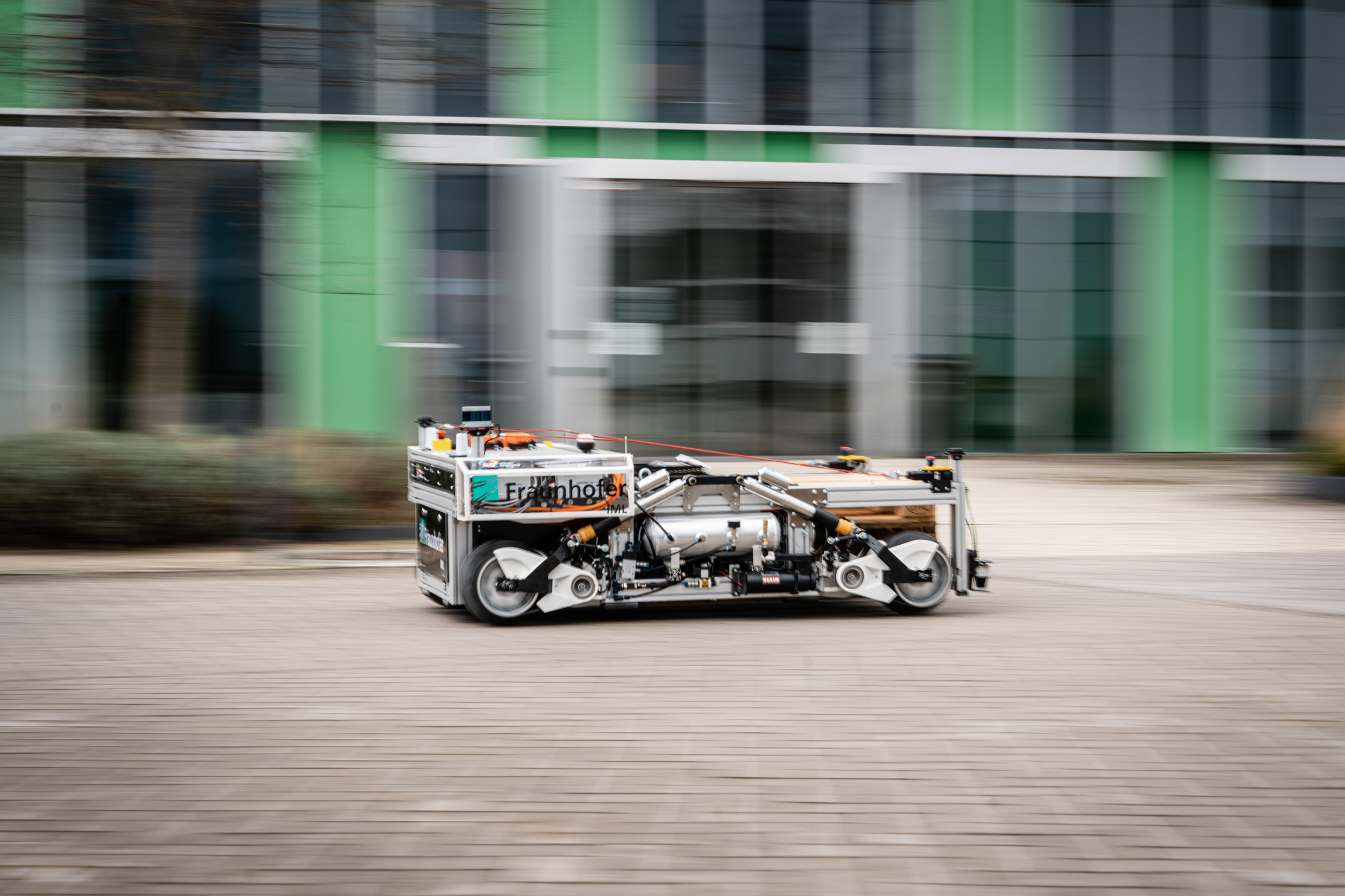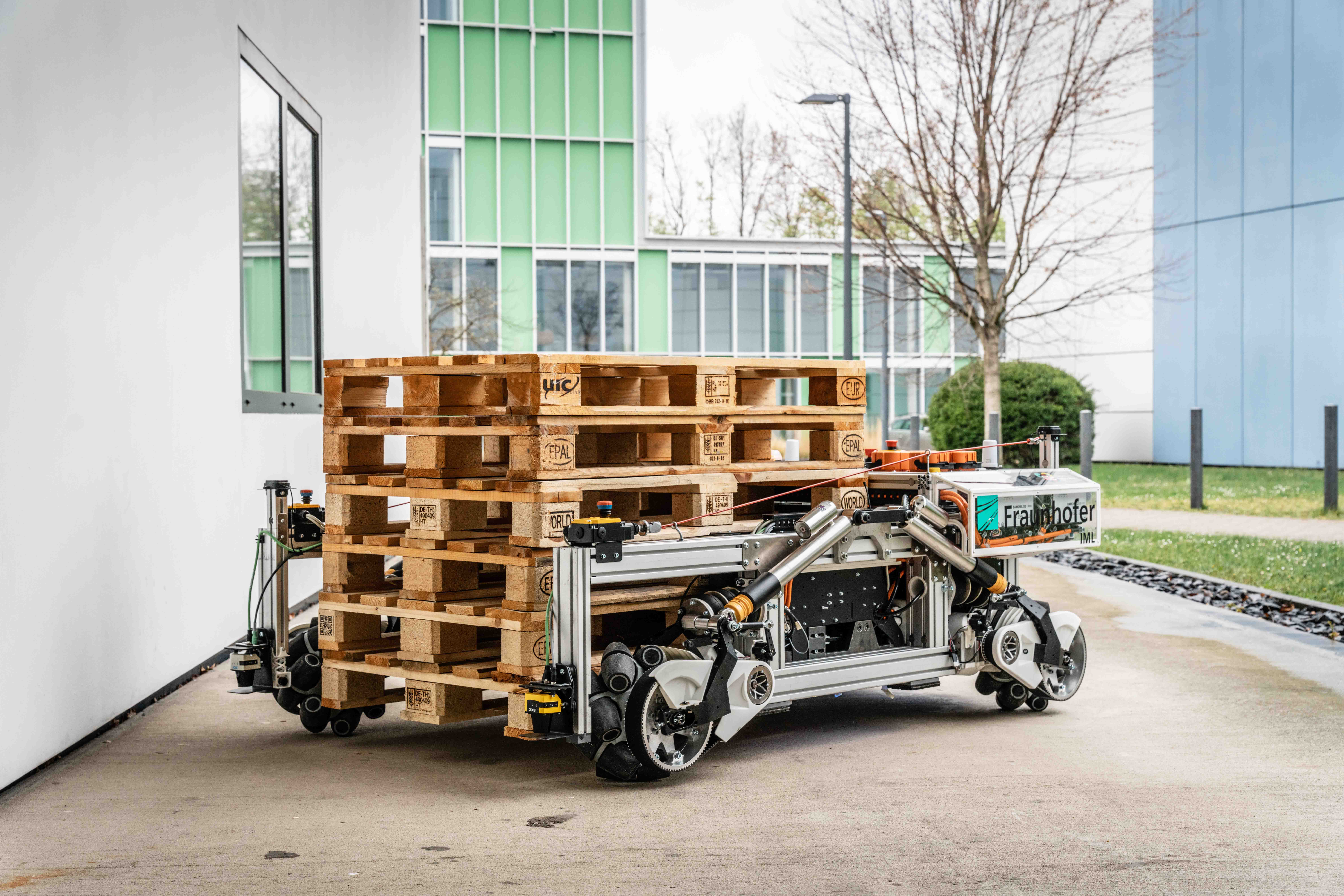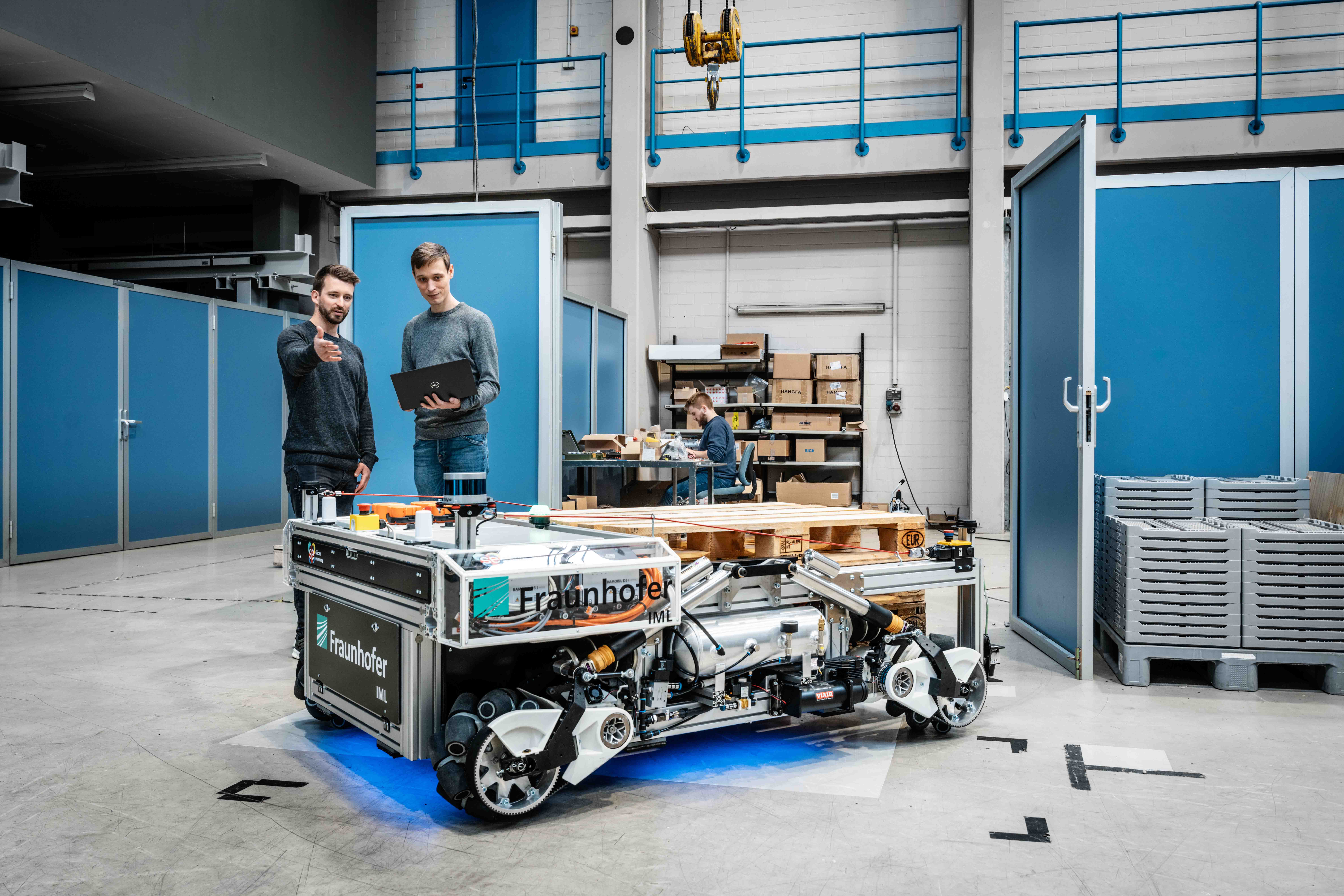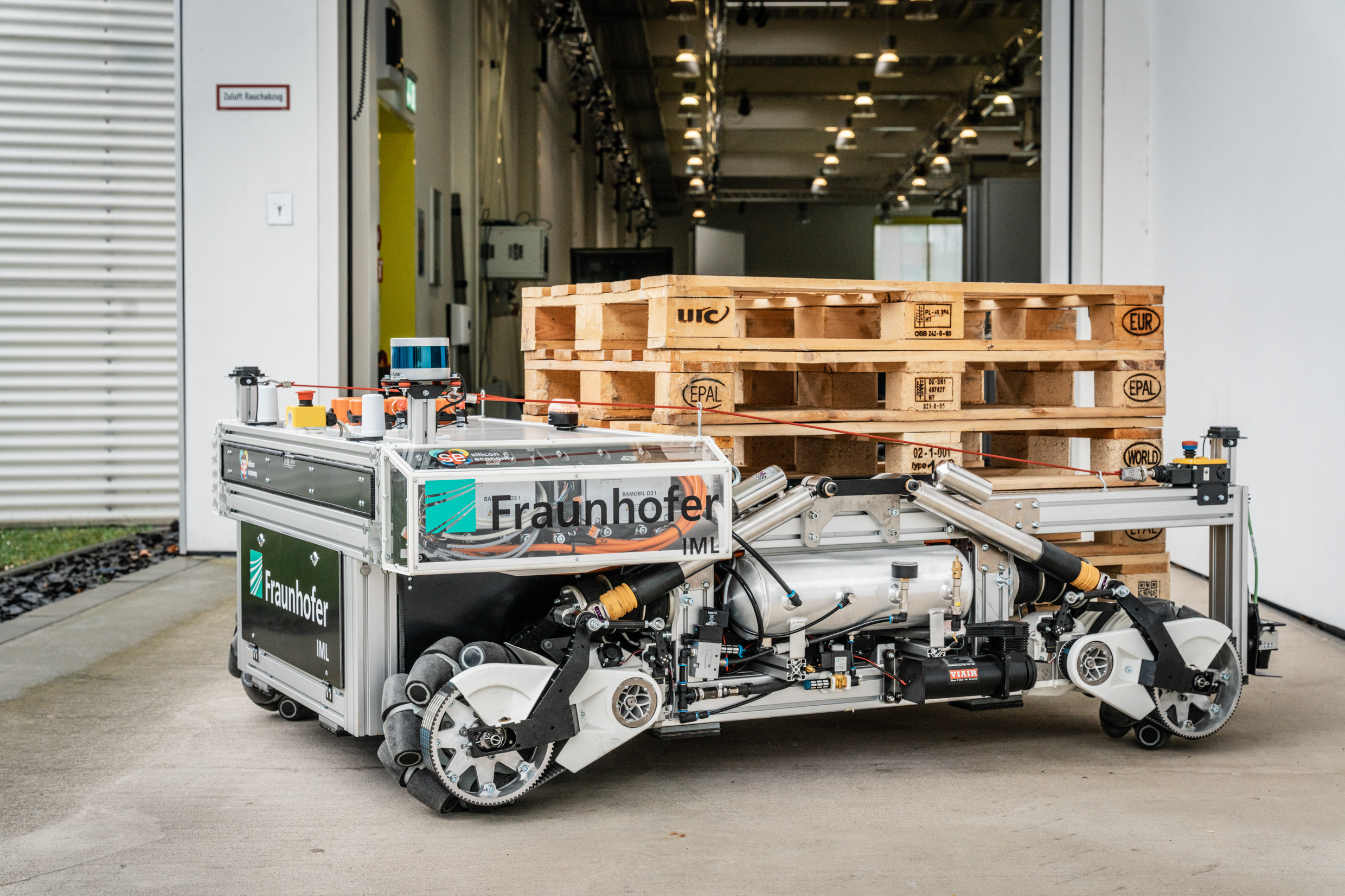Odyn really comes into its own when materials need to be moved from one building to another over longer distances on large factory sites. It transports large pallets with ease and moves seamlessly from indoor to outdoor areas. Where forklifts or tugger trains are currently used for tasks of this kind, Odyn could increase resilience and flexibility in the future. Compared to conventional transportation vehicles, Odyn could, according to the researchers, reduce the risk of accidents and significantly improve efficiency. A tugger train, for example, always needs to be built first: Parts need to be buffered and put together, then spread along a production line in a milk run. A large amount of work is involved in coordinating this. Instead, individual, flexible and autonomously operating vehicles could travel directly to where they are needed. Odyn’s payload is currently 350 kg. However, the vehicle can easily be set up for heavier payloads. “For industrial use, we could make the frame from steel instead of aluminum. The drive system and chassis are already designed for a weight of 1.3 metric tons,” says Guido Follert, Head of Department Machinery and Systems at Fraunhofer IML.
 Fraunhofer Institute for Material Flow and Logistics IML
Fraunhofer Institute for Material Flow and Logistics IML



